
GROWTH OF NEW PEACE MOVEMENTS
The period following the First World War saw the emergence of a great number of new national and international peace movements, including the Interallied Federation of War Veterans Organisations (FIDAC), the Women’s International League for Peace and Freedom, War Resisters International, the No More War Movement and the Peace Pledge Union. Many of these organisations still exist today.
The League of Nations Union (LNU)
Supporting the work of the League of Nations in Britain
In Britain, the largest peace organisation was the League of Nations Union (LNU), which formed in 1918 and had active branches across the country. In 1934-35, the LNU organised the Peace Ballot, the first national referendum on peace.
League of Nations Union in Lancaster
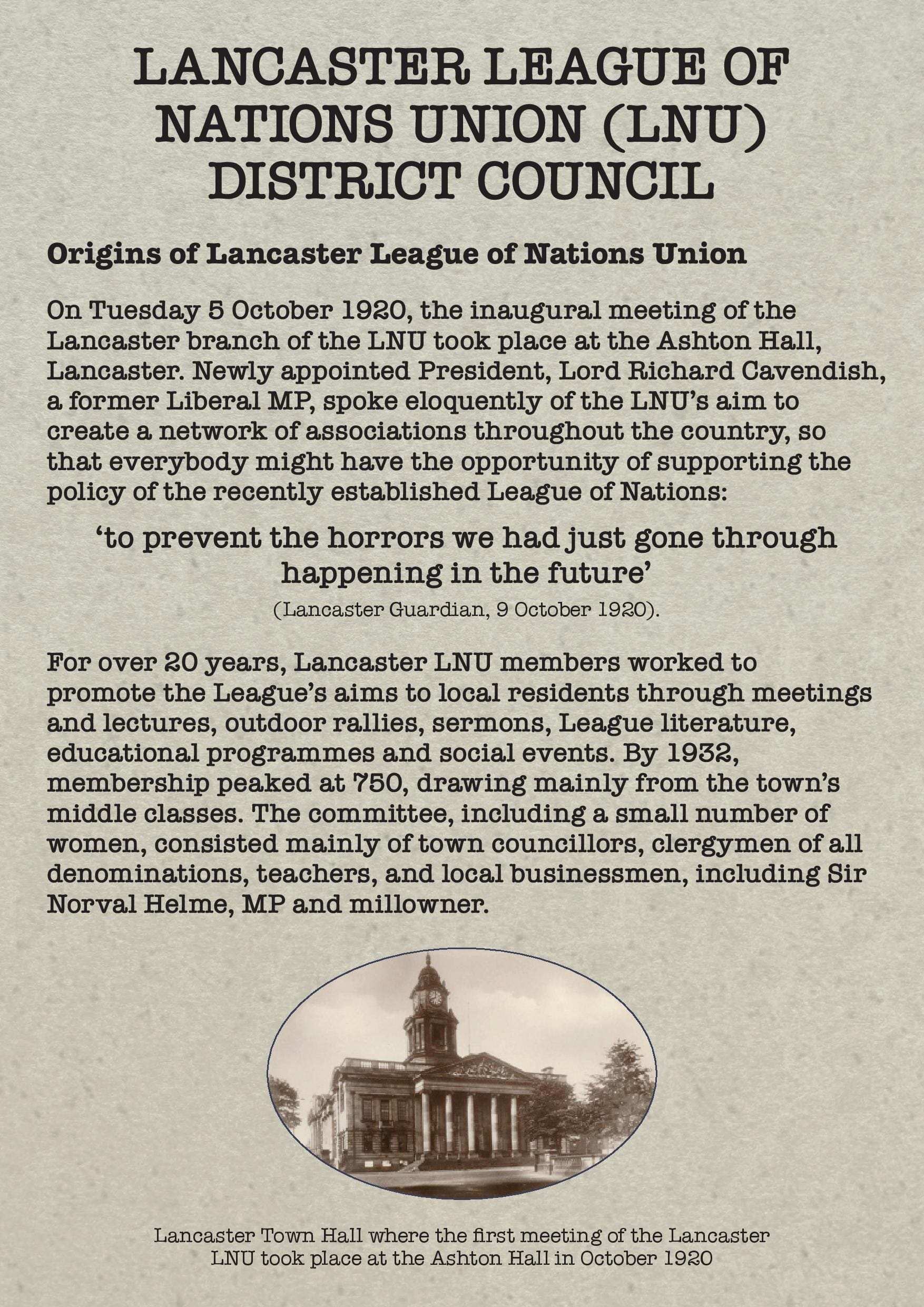
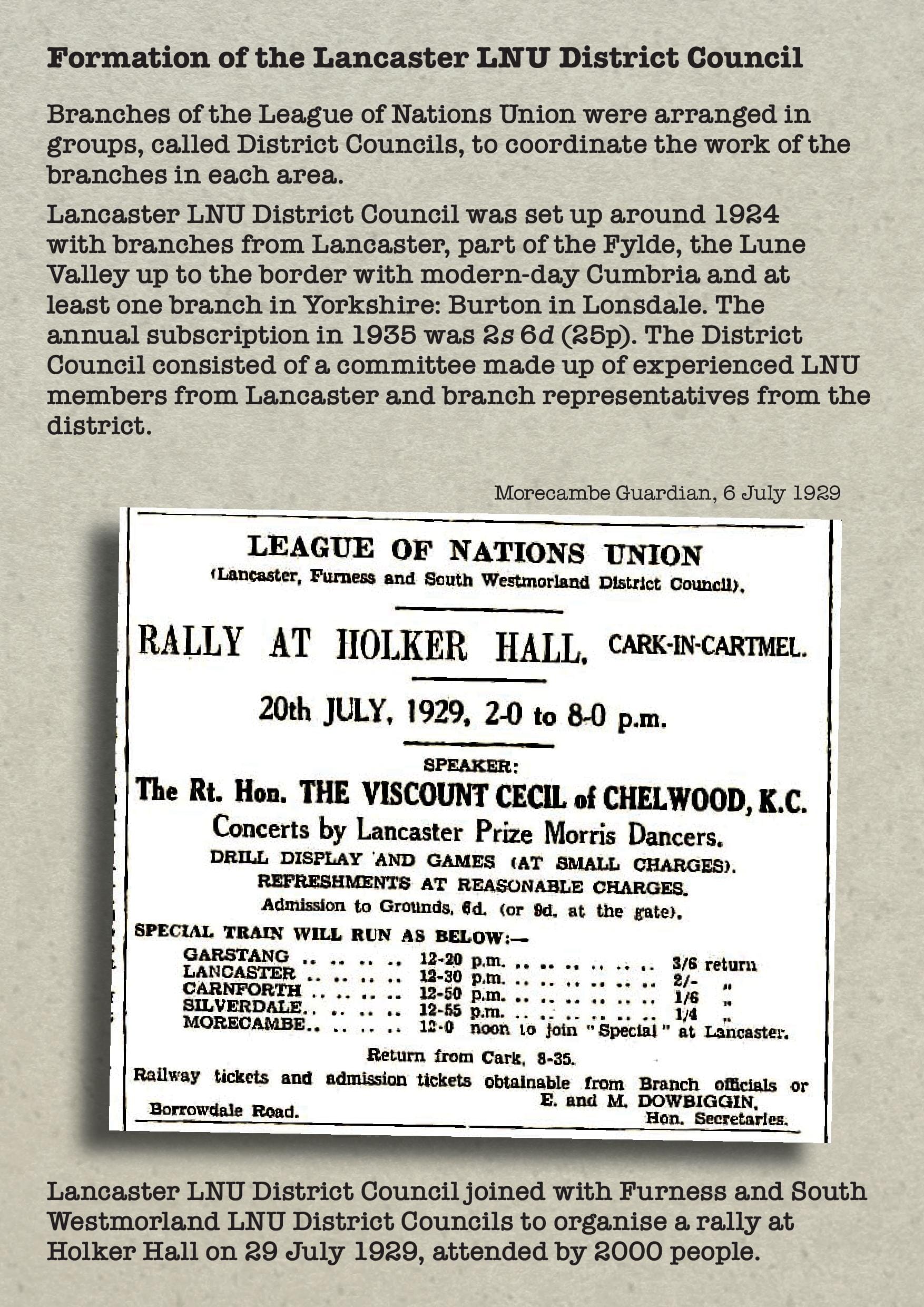
The emergence of ‘citizenship education’ in Britain
In Britain, the extension of the vote in 1918 to all men over 21 and women over 30 led to greater popular interest in political, including foreign, affairs. Various organisations, such as the Workers’ Educational Association and the co-operative movement, began educational programmes to educate these newly enfranchised groups.
Some schools also started teaching civics or peace education. Many became ‘junior’ branches of the League of Nations Union (LNU). School branches hosted talks by visiting speakers and received the LNU’s schools’ newspaper, featuring educational material about peace and internationalism.
Lancaster Girls’ Grammar School set up a junior LNU branch in April 1923. Students were allocated a country and a representative from each country attended an international ‘Assembly’ which met at least once a year. Annual lectures were held on topical League issues such as Palestine, disarmament, Franco-German relations and the Spanish Civil War.
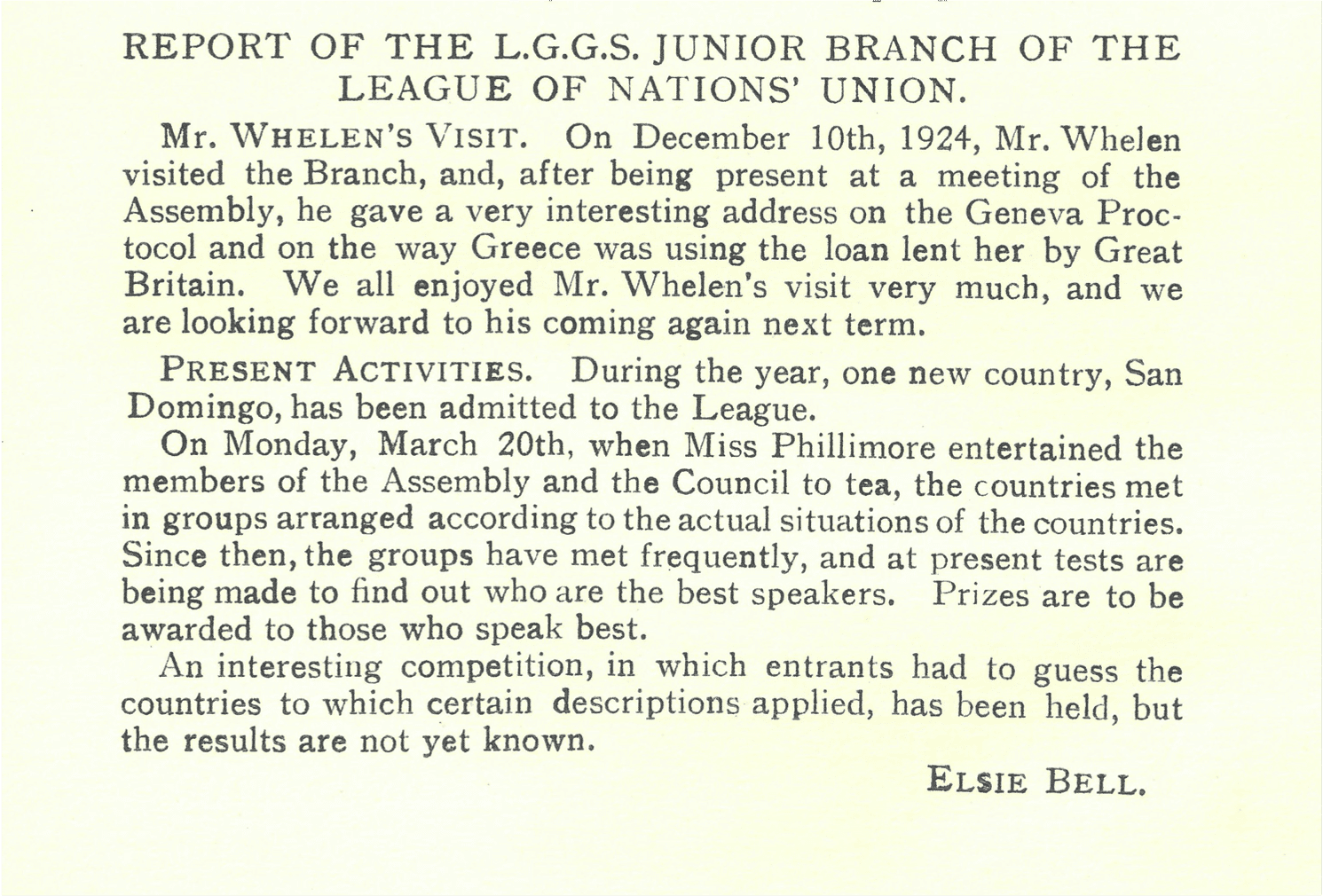
Report from Chronicle of Lancaster Girls' Grammar School, 1925
Image courtesy of LGGS

Other League of Nations activists in Europe – Pál Auer, Hungary
Peace organisations sprang up across Europe during this period and some, like the League of Nations Union in Britain, directly supported the work of the League of Nations. Pál Auer was a Hungarian lawyer committed to the idea of transnational cooperation. He published a book called 'The League of Nations' in 1918 and in the 1920s became head of the Hungarian Peace Association and the Hungarian bureau of the Pan-European Union. His opposition to Hungary’s occupation by Nazi Germany during the Second World War forced him to go into hiding.
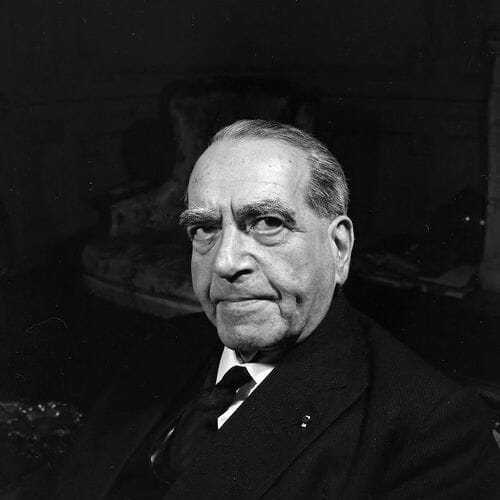
Source: István Becságh/Fortepan
‘Path of Life’ by Kondoros Primary School students, LFTP Hungary
Students from Kondoros Primary School were inspired by Pál’s story and others to create a collage. The students looked at the ways that Hungarian artists from the interwar period responded to the challenges of their day. Then, in their collage, they reflected on the journey of their own lives in relation to the past.
The students were asked to visualise the inner path that they’ll go on through their life. They each created their ‘path’ using a range of materials including paper, textiles, wood, paint, wool, sandpaper and foil. The paths twist and turn, as the students explored how, during their journey, they will face problems, solutions and unexpected events. The collage joins their various paths together to represent both the twisting nature of the artists’ lives and the complexity of our past.
As the students used different materials, the final artwork became three dimensional. The collage is therefore not just a visual piece but a tangible experience, meaning that visually impaired people can also enjoy it.
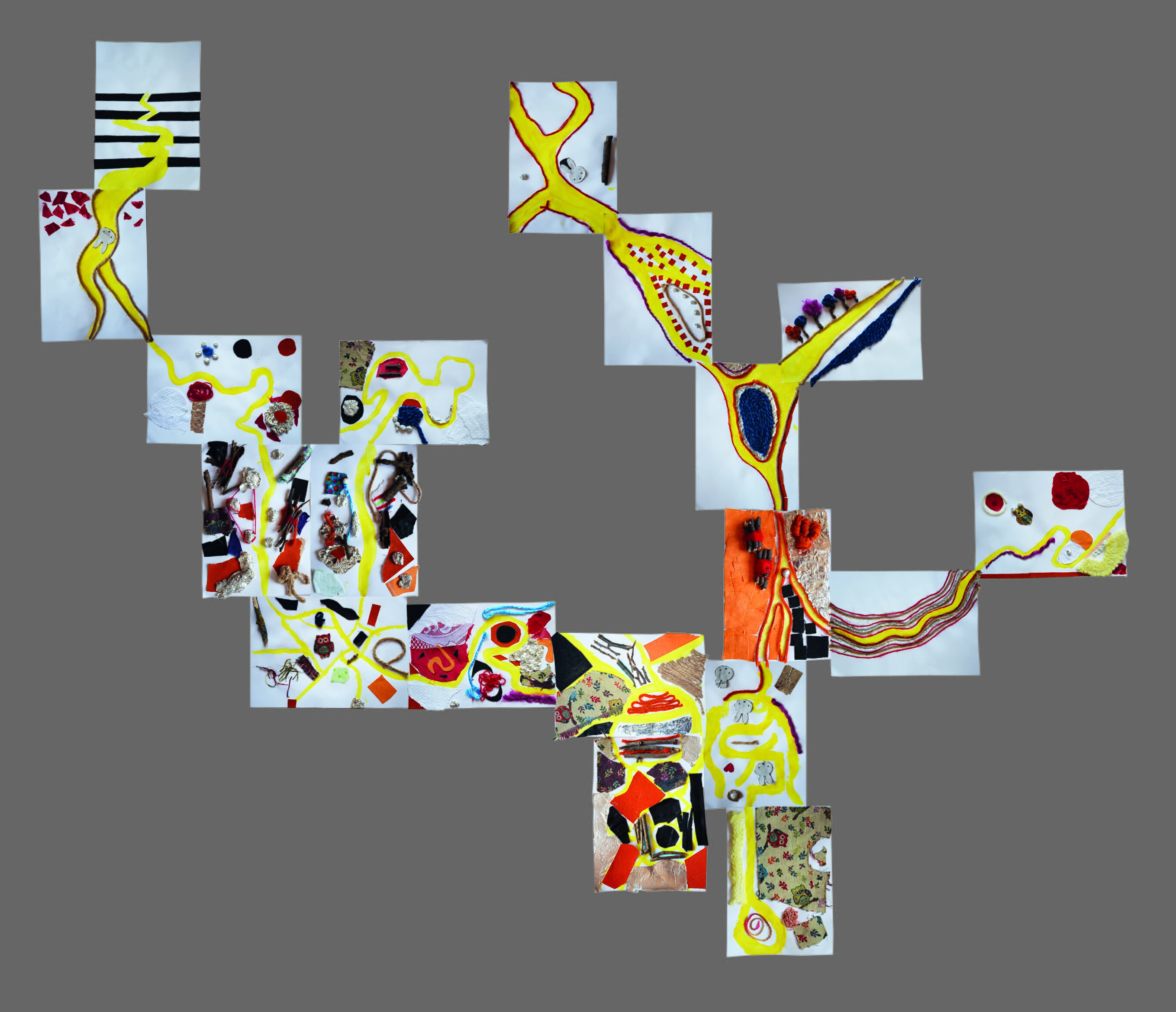
'Path of Life'